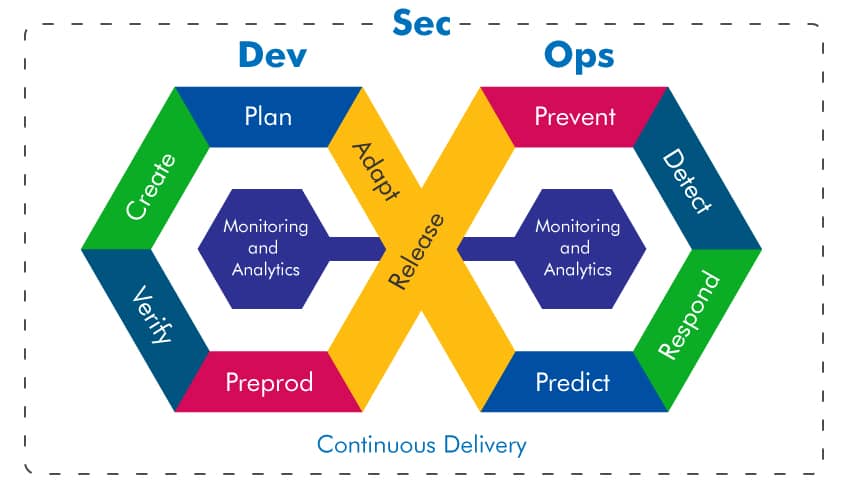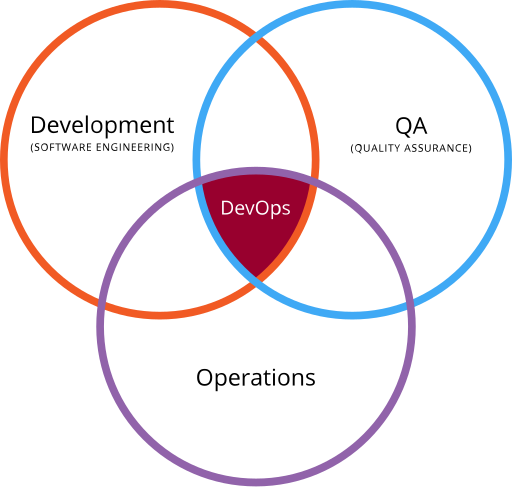DevOps - Bridging Development and Operations for Streamlined Software Delivery
DevOps is a transformative approach that fundamentally changes the dynamics between software development and operations teams. Originating as an amalgamation of “Development” and “Operations,” DevOps integrates these traditionally separate roles to foster collaboration and optimize software delivery. Unlike stereotyped frameworks, DevOps is adaptive and can be tailored based on an organization’s structure and particularities. In this blog post, we will explore the fundamentals of DevOps, its core practices, cultural impacts, and why it has become a key methodology for modern IT environments.
Understanding DevOps
DevOps is a methodology that promotes collaboration between development and operations, with the goal of increasing the speed and quality of software delivery. It combines several methodologies, including Continuous Delivery, Agile Development, and Lean Methodology.
The traditional software development model had distinct stages for development and operations, which often led to challenges such as:
- Lack of communication between teams.
- Delays due to handoffs and confusion over responsibilities.
- The so-called “Wall of Confusion” that occurs when development transfers code to operations, resulting in finger-pointing over issues that arise.
DevOps resolves these by uniting the development and operations teams. The teams jointly manage the entire software development life cycle, from coding and testing to deployment and maintenance. This collaborative approach improves:
| Aspect | Traditional Approach | DevOps Approach |
|---|---|---|
| Team Collaboration | Separate Teams | Joint Responsibility |
| Delivery Speed | Slower, due to sequential work | Faster, due to parallel and cooperative efforts |
| Issue Management | Blame Culture | Blameless Culture and Shared Accountability |
| Tool Usage | Department-Specific Tools | Integrated Toolchain for all Teams |
DevOps and Modern IT Integration
Sub-points
- Cultural Change: DevOps isn’t just about tools—it represents a shift in culture. It establishes a blameless culture where teams work collaboratively without pointing fingers, enabling a seamless flow of information and enhanced mutual trust.
- Technical Changes: DevOps also affects the technological stack. Tools selection is essential, and companies must use tools that fit their infrastructure and meet the needs of both developers and operations.
Core Practices in DevOps
Continuous Delivery and Integration
The Continuous Delivery (CD) and Continuous Integration (CI) practices are foundational in DevOps, allowing teams to frequently merge code changes into a shared repository and automatically run tests. This practice ensures:
- Speed: With continuous testing and integration, any code issues are quickly identified and resolved, accelerating the software development lifecycle.
- Quality: Testing is an ongoing process, ensuring bugs are caught early before code enters production.
The purpose of CD/CI is to automate as much as possible, reducing manual intervention and enabling a higher release frequency. This also aligns with the Agile methodology of incremental delivery, which ensures a faster response to changes and customer needs.
| Practice | Description | Impact |
|---|---|---|
| Continuous Integration | Code changes merged regularly | Reduced integration problems and faster delivery cycles |
| Continuous Delivery | Automated delivery pipeline | Minimizes manual processes, increasing reliability of releases |
Cooperative Work Culture
In DevOps, one of the most significant cultural changes is cooperation and shared responsibility. The “wall of confusion” between developers and operations teams is eliminated. All members, regardless of role, share ownership for the application’s lifecycle:
- Blameless Postmortems: When incidents occur, DevOps emphasizes learning rather than blaming. This approach helps teams grow from failures, improving overall reliability and productivity.
- Trust Building: Trust is a key element in DevOps culture. By working closely, teams build interdepartmental trust, which leads to better communication and understanding.
Lean Methodology Influence
DevOps builds upon Lean principles, which focus on reducing waste, improving process flows, and maximizing value. Lean provides a solid foundation for making DevOps an adaptable, process-oriented approach:
- Minimizing Waste: DevOps identifies and eliminates processes that do not add value, such as manual code testing, which can be automated.
- Adaptive Solutions: DevOps is designed to be adaptive to the changing needs of projects, allowing dynamic adjustments as more data becomes available or requirements evolve.
Technological Integration and Tools
Tool Selection in DevOps
Selecting the right tools is crucial for successfully implementing DevOps practices. Tools play an essential role in ensuring continuous integration, testing, and deployment. Common tools used include:
- Version Control: Tools like Git facilitate collaboration by allowing multiple developers to work on the same codebase while tracking changes.
- CI/CD Tools: Jenkins, Travis CI, and GitLab CI help automate builds and deployments.
- Configuration Management: Tools like Ansible, Puppet, and Chef ensure environments are consistent across development, testing, and production.
| DevOps Tool | Purpose | Example Tools |
|---|---|---|
| Version Control | Manages source code | Git, Subversion |
| CI/CD Pipelines | Automates build/test/release | Jenkins, GitLab CI, CircleCI |
| Configuration Management | Manages environment consistency | Ansible, Puppet, Chef |
| Monitoring Tools | Tracks application performance | Prometheus, Nagios, Grafana |
These tools are integrated into a DevOps toolchain, which creates a seamless process for software delivery. Tool integration allows a service delivery approach that reduces the risk of errors, enhances system reliability, and provides better overall value to the customer.
DevOps represents a fundamental transformation in the way software development and operations teams collaborate, breaking down silos to foster a culture of cooperation and shared responsibility. By emphasizing continuous integration, lean principles, and cultural change, DevOps ensures that development processes are streamlined, adaptive, and geared towards delivering high-quality software efficiently.
DevOps is not a one-size-fits-all framework but an approach that adapts to an organization’s unique needs, culture, and technological landscape. Whether it’s enabling rapid continuous delivery, minimizing the wall of confusion, or integrating an effective toolchain, DevOps remains the cornerstone for building modern, efficient, and resilient IT services.
To further understand DevOps and its implementation, delve into related practices such as Lean Methodology, Continuous Delivery, and Agile Development. Explore these through hands-on practice and integrate them gradually into your workflows to truly experience the advantages of this transformative methodology.
For further reading and resources about DevOps and other Agile methodologies, visit DevOps and Modern IT Integration.


